A Benedictine Treasure
The San Xoán de Poio Monastery is one of Galicia’s finest Benedictine treasures. Declared a Historical-Artistic Monument in 1971, its impressive architecture houses many cultural treasures, including two cloisters, one of Spain’s most important monastery libraries, with over 100,000 volumes, and a gigantic hórreo (granary).
Even today, there is a small community of Mercedarian monks living there. It provides lodgings and is an important passing point on the Spiritual Variant route and on the Padre Sarmiento Route along the Camino de Santiago.
A history spanning millennia
Its foundation is attributed to Fructuosus of Braga in the 7th century, and its influence grew during the Middle Ages as a result of gifts from individuals and monarchs.
In 1548, it became part of the San Benito congregation of Valladolid and a year later the Colegio Mayor de Teología (Residential College of Theology) was founded, which would go on to achieve considerable prestige.
The Modern Age brought period of prosperity to the monastery thanks to the substantial agricultural and marine revenues it received, which permitted extensive work to be undertaken on buildings that would gradually replace the old medieval structures.
The Benedictines abandoned the monastery in 1835, but it was occupied once again in 1890 when the Mercedarian community of Conxo (Santiago de Compostela) settled here and renovated and enlarged the building.
Monumental Cloisters
The monastery has two magnificent cloisters. The oldest is the procession cloister, in a Renaissance style, dating back to the late 16th century. It is the work of the architect Mateo López, and its most notable aspects are its starred vaulted ceilings, the figurative corbels and keystones and a Portuguese chafariz style fountain in the centre of the patio. The other cloister is the Portería or de los Naranjos cloister of the mid-18th century. This cloister features a large mosaic of the Camino de Santiago created between 1989 and 1992, based on the design by Czech artist Antoine Machourek, founder of the School of Mosaics.
The Church
The church’s architecture is entirely Baroque from the late 17th and early 18th centuries, with a few older Renaissance elements. Its façade, flanked by two towers, is presided over by images of St John the Baptist, St James and St Andrew. Inside there are two extraordinary altarpieces, one on the main altar with Solomonic columns and one in the chapel of Christ with an image of the crucifix and a representation of the Last Supper.
The financial power of the monastery
The hórreo, an impressive construction in the vegetable garden, is a conspicuous example of the monastery’s financial strength during the Modern Age. At 123 metres long and uncommonly supported on three rows of pillars, it is one of the largest granaries in both size and volume in the whole of Galicia.
Contact
Rúa Convento, s/n, 36995 Poio, Pontevedra.
Telephones: 986 770 244 (community) / 986 770 000 (Lodgings).
Open to visitors: the church, the Procession Cloister, the refectory, the Crucero Cloister, the mosaic, the exhibition rooms, the granary and the water supply.
Timetable
From monday to saturday from 10:00 to 13:00 and 16:30 to 19:30. Sundays from 16:30 to 19:30.
Individual entrance: 2,50 euros. Groups (+ de 20) 2 euros.




